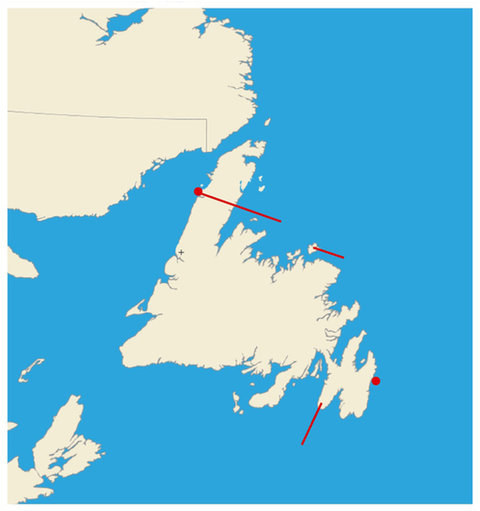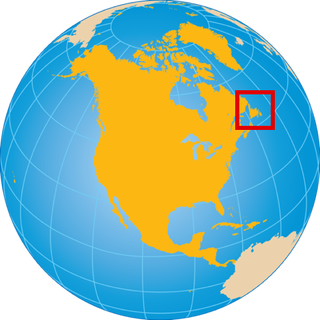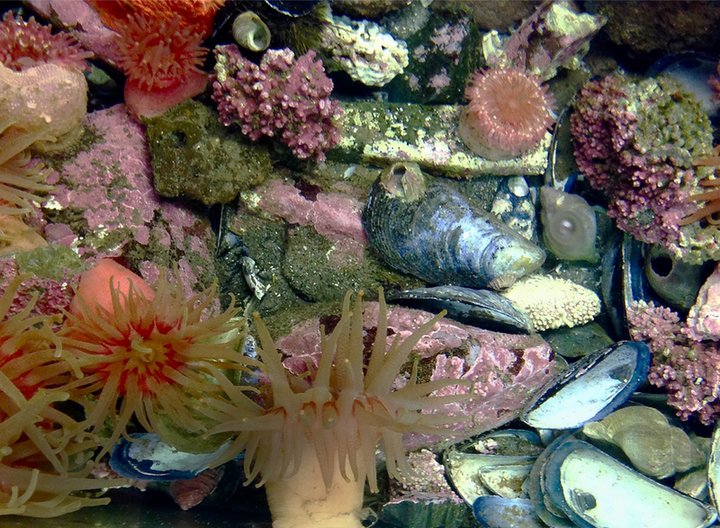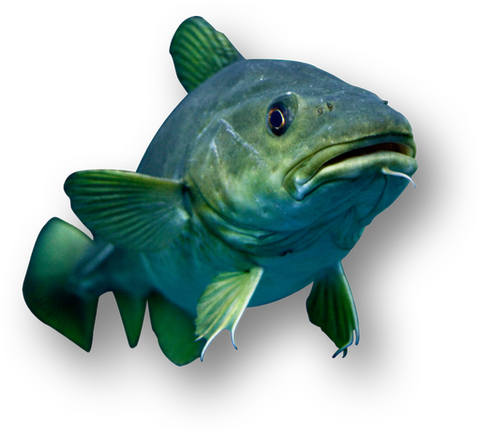
Labrador
Québec
Atlantic
Ocean
Newfoundland
GrosMorneMountain
Port au Choix
Fogo Island
Gull
Island
Cape St. Mary's
100 kilometers
100 miles

North
America
Let’sgetonething straight:
Iknowthatcariboudonotliveintheocean.I’mamarinebiologist.Istudyoceananimals.IliveonanislandcalledNewfoundlandineasternCanada.MyresearchtakesplaceintheNorthAtlanticOcean.Ofcourse,therearenocaribouintheocean.But,IcanexplainwhyI’mtalkingaboutcaribou.Here’swhat happened.
IwasvisitingthePortau Choixlighthouse.AsIwalkedaroundthelighthouse,Inearlyranintoasmallherdofcaribou.Theyweregrazingonthelighthousegrounds.Igeekedout!Caribouarehardtoseeinthewild.Theyavoidpeople.Toseesomanyofthemwasabig deal.
TherewasnowayIwasgoingtomissthis.Idroppedtotheground.Iinchedforwardonmystomach.Myheartwasracing.IgotmycameraandtookasmanyphotosasIcould.Soonthecaribousensedmeandmoved off.
Yes,I’mamarinebiologist.Butonthisisland,Iseeanimalsfromthesea,sky,andland.Letmetellyouaboutafewof them.
TheSea
It’stheseacreaturesthatIknowthebest.TheNorthAtlanticisverycold.Itswaterscangetrough.Yet,manyanimalscallthesewaters home.
Seaanemonesliveontheseafloor.Theseinvertebrateshavesquishybodies.Theygluethemselvestorockstostayinplace.Theirlongtentaclesstingandgrabpassing prey.

ThewatersaroundNewfoundlandarefullofanemonesandother life.

capelin
SeaSnacks
Whiletheanemonesholdfasttorocks,tiny,shimmeringfishswimabout.Theyarecapelin.Theycometothecoastsbythemillions.Here,theyputonashow.Thousands“jump”ontorockybeachestolaytheir eggs.
Manyspeciesfindcapelindelicious.Humpbackwhalesarebigfans.TheytraveltoNewfoundlandinthesummer.Foodisplentifulhere.Theyeatalotsotheygainandstorehealthyfat(blubber)duringthese months.
Whenthewhalescomeclosetothesurface,youcanseesmall,hook-likefinsontheirbacks.Or,youmightspotawhale’stailbeforeit dives.

Thetailofahumpbackwhalesticksoutabovethewater’ssurfaceasthewhale dives.

Atlantic cod
Atlanticcodeatcapelin,too.Theyhavebigeyesandalongchin“whisker”calledabarbel.Thebarbelhelpsthesefishsensefoodinmurky waters.